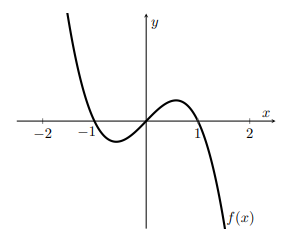Questões de Concurso
Comentadas para if-mg
Foram encontradas 334 questões
Resolva questões gratuitamente!
Junte-se a mais de 4 milhões de concurseiros!
I – Even though she read Pride and Prejudice, she does not remember all the story. II – “Mr Darcy, who was leaning against the mantelpiece with these eyes fixed on her face, seemed to catch her words with no less resentment than surprize.” (AUSTEN, 2013, p. 184). III – “It will be no use to us if twenty such should come, since you will not visit them.” (AUSTEN, 2013, p. 3). IV – “The two ladies were delighted to see their dear friend again, […] since they had met […]” (AUSTEN, 2013, p. 78).
I- “Previewing and predicting. Giving the text a quick once-over to be able to guess what is to come; II- Skimming. Carefully getting the most detailed analysis of a passage or book; III- Guessing the meaning of unknown words from the context. Using such clues as knowledge of word parts, syntax, and relationship patterns”.
(MIKULECKY, 2008)
Source: https://docplayer.net/5689737-Teaching-reading-in-a-second-language.html Access on March, 20th 2023
“What is reading? Reading is a conscious and unconscious thinking process. The reader applies many strategies to reconstruct the meaning that the author is assumed to have intended. The reader does this by comparing information in the text to his or her background knowledge and prior experience.” “What is literacy? Literacy is a set of attitudes and beliefs about the ways of using spoken and written language that are acquired in the course of a person’s socialization into a specific cultural context.” “It is important to clarify the relationship between reading and literacy, since research has shown that they are not the same thing. In fact, the definitions and uses of literacy vary culturally, and the cultural contexts of literacy are the underpinnings of the acquisition and use of reading and writing.”
(MIKULECKY, 2008)
Adapted from: https://docplayer.net/5689737-Teaching-reading-in-a-second-language.html Access on March 20th , 2023
B. Concerning teaching literacies approaches, identify the option that best describe a social literacy activity.
1. Our high turnover rate has been a growing _______ for us. 2. A rose in full bloom had been allowed to grow _______ one of the walls. 3. The company is growing _______ all the time. 4. Opposition to the latest proposals is growing _______ . 5. The Catholic community in Edinburgh began to grow _______ in the mid-19th Century.
( ) considerably ( ) steadily ( ) concern ( ) bigger ( ) unchecked up
A collocation, as one of the units of formulaic language, is a series of words or terms that cooccur more often than would be expected by chance. In phraseology, a collocation is a type of compositional phraseme, meaning that it can be understood from the words that make it up. This contrasts with an idiom, where the meaning of the whole cannot be inferred from its parts, and may be completely unrelated (WARD, 2007; SCHMITT, 2007; 2012). B. Refer to the poem line “But I laugh, And eat well, And grow strong”. Which is the best definition for the collocation grow strong?
“Besides, They'll see how beautiful I am And be ashamed”
B. Which are the verb tenses of the underlined words, respectively? Check the alternative which presents the verb tenses of the underlined words.
It´s possible to observe a multi-dimensional meaning in the title, “I, too” in the lines that open and close the poem. If you hear the word as the number “two”, it can be inferred to someone who:
I. The poem expresses how he felt like an unforgotten American citizen because of his skin color. ( )
II. Hughes proclaims that he, too, is an American, even though the dominant members of society are constantly pushing him aside and hiding him away because he is an African American. ( ) III. Even though Hughes feels ostracized because of his job in the kitchen, he still sings like an American.( )
IV. Although short in length, it delivers a powerful message about how many African Americans have been working in America.( )
V. He hopes white people will be ashamed of the way they have treated African Americans, and they will realize they are also a part of the country. ( )
B. Now, choose the correct alternative.
I – nationalist, example, world, empire, program. II – process, culture, power, product, information. III – decolonization, information, power, education, advice. IV – institution, decolonization, advice, system, model.
B. Considering the classification between countable and uncountable nouns, in which groups do all the words share the same type of nouns?
“Initially, in many places in the colonized world, the process of resistance was conducted in terms or institutions appropriated from the colonizing culture itself” (ASHCROFT, et al., 2007, p. 56).
B. The word “colonized” in this excerpt shares the same word class with the word in bold in:
“Decolonization is the process of revealing and dismantling colonialist power in all its forms. This includes dismantling the hidden aspects of those institutional and cultural forces that had maintained the colonialist power and that remain even after political independence is achieved.” (ASHCROFT, et al., 2007, p. 56).
B. Considering this discussion, how could a teacher follow a decolonial approach while teaching English as a Foreign Language?
Considere a função real de uma variável real f(x) definida por

O valor de L para que f(x) seja contínua em x = 0 é igual a:

 a
bissetriz do ângulo reto A, onde D está entre B e C. O segmento
a
bissetriz do ângulo reto A, onde D está entre B e C. O segmento  mede:
mede: 